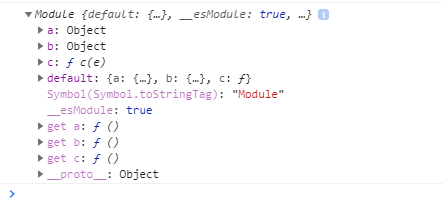关于ES6模块公开与导入
关于ES6模块公开与导入
假设tools.js是工具模块
假设app.js是入口。
如果在tool.js中使用下列公出:
1 | export const a = { |
即公出多个对象,
则app.js中正确导入如下:
1 | import {a,b,c} from '../../utils/tools' |
取值如下:
1 | a; |
同理,如果在tool.js中使用下列公出:
1 | const a = { |
即公出单个对象,对象内含多个元素,
则app.js中正确导入如下:
1 | import onlyOneParam from '../../utils/tools' |
取值如下:
1 | onlyOneParam.a |
End。
如果两种同时使用:取法不冲突能同时兼容。但是export default只能在一个模块中只能有一个,export可以有多个。
以上情况实测环境是vue项目中,如果是node开发肯定是不支持这类写法的,nodejs 本身是有自己的模块系统方式的。
1 | // tools.js |
不管用哪种公开方法,
1 | import * as onlyOneParam from '../../utils/tool' |
这个取法都能取到值,层级不同而已。
本博客所有文章除特别声明外,均采用 CC BY-NC-SA 4.0 许可协议。转载请注明来自 念一!
评论
GitalkLivere

